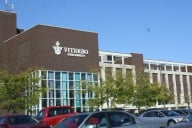You have /5 articles left.
Sign up for a free account or log in.
WASHINGTON -- Prairie View A&M University’s first-ever capital campaign, which wrapped up in 2008, appeared to be a success. The university did, after all, exceed its $30 million goal. But the amount raised masked an alarming statistic: only 28 percent of the donations recorded came from alumni, and only about 5 percent of alumni gave.
Prairie View decided to survey its alumni to see what had gone wrong, and the results were illuminating, Nelson Bowman III, the university’s executive director of development, told an audience of administrators from historically black colleges and universities on Wednesday. In the survey, 84 percent of alumni said they would have supported the campaign if they had known about it, 76 percent said they would have volunteered, and 65 percent said they were never asked.
“There was no effort to reach out to the very constituents who would be most proud,” Bowman said.
Bowman shared his story as part of a panel discussion on alumni giving at HBCUs. The panel was part of the annual conference of the White House Initiative on Historically Black Colleges and Universities, held here this week.
The four panelists, all representing HBCUs that have had relative success in alumni giving, focused on the importance of early engagement with potential donors and tracking students and alumni. They acknowledged that HBCUs often have more "financially humble" alumni than other institutions, but said universities can make up for that by improving their advancement strategies.
"We believe we cannot wait until alumni graduate to start soliciting them and making them good alumni,” said Whittaker Middleton, vice president for Institutional advancement at Claflin University. Since arriving at Claflin in 1982, Middleton has overseen the expansion of the university’s development office from himself and a secretary to a multidivision operation with more than 20 people. In that time, too, the university’s alumni participation rate has increased from about 35 percent to 45 percent.
Middleton said he believes the key is creating a culture of giving on campus. Most students, he said, are not naturally inclined to give; they need to be taught.
Bowman noticed the same need on the Prairie View campus, and this year began a student giving campaign. Already, he said, 56 percent of freshmen have given. The university plans to expand the program to sophomores next year, and then to upperclassmen.
“Had we been doing this for 136 years, where would we be?” Bowman said. With an alumni base of 40,000, it can be hard to reach graduates once they’ve moved on, he said, but it is simple to reach current students and educate them about donating.
At Paul Quinn College, an institution that is recovering from serious damage to both its finances and its image, President Michael Sorrell is taking it one step further. The college has developed a Center for Fundraising and Philanthropy that offers an undergraduate major and a certificate program.
“Maybe it’s time we start teaching people of color to start giving,” Sorrell said.
The program allows Paul Quinn not only to educate students about giving, but to train future advancement staff, Sorrell said. This is especially important for a college that is essentially building its advancement efforts from scratch, he said.
All the panelists agreed that training and developing staff is critical, and many shared anecdotes about how poorly managed their giving programs used to be. Sorrell, for example, said that Paul Quinn had no alumni base to speak of just a few years ago, and he and his staff had to use Twitter, Facebook and word of mouth to track people down.
The panel also emphasized the importance of calling programs. When Middleton took on his position, he visited 12 universities while deciding how to expand the university’s development office. The one thing the universities all had that Claflin lacked was a call center, he said.
So he created a student-calling program, and since March 2010, that call center has generated 329 first-time donors and 13,000 contact updates, which are critical for future asks, Middleton said. Prairie View similarly has hired students to call and engage alumni, and in five sessions raised more than $500,000, Bowman said.
The panelists emphasized that calling programs are an important way to keep in touch with alumni, even if there is no ask. In fact, they said, not every call should be a plea for money; some should be simply to inform alumni of upcoming events or recent news they might find interesting.
Still, Middleton said few universities need to worry about asking too much. Instead, he said he thinks the biggest mistake HBCUs make in alumni giving is not asking enough. “Don’t ever feel bad about asking,” he said.








